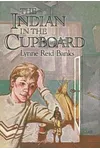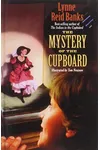Step into the enchanting world of The Indian in the Cupboard, where a dusty old cupboard holds the key to bringing tiny toys to life! Written by Lynne Reid Banks, this beloved children’s fantasy series follows young Omri, a boy who discovers that his magical cupboard can animate plastic figures, sparking adventures filled with history, friendship, and moral dilemmas. Perfect for readers who love heartwarming tales with a dash of magic, this series has captivated generations with its unique premise and timeless lessons.
From its debut in 1980, The Indian in the Cupboard weaves a spellbinding narrative that blends the wonder of childhood imagination with profound themes of responsibility and empathy. Let’s explore how this series began, its unforgettable stories, and why it remains a gem in children’s literature.
How The Indian in the Cupboard Began
Lynne Reid Banks, a British author and former journalist, crafted The Indian in the Cupboard inspired by her son’s fascination with toy figures and her own love for storytelling. Published in 1980, the first book was born from a simple yet magical idea: what if a child’s toys could come alive? Banks’ background in writing for young audiences allowed her to infuse the series with relatable characters and ethical questions, earning praise for its originality. The book’s success led to four sequels, each expanding Omri’s world and the consequences of his magical discovery.
The Heart of The Indian in the Cupboard
The series spans five books, each a thrilling chapter in Omri’s journey. The Indian in the Cupboard (1980) introduces Omri, who receives a magical cupboard for his birthday. When he places a plastic Iroquois figure named Little Bear inside, it springs to life, pulling Omri into a world of miniature adventures. The Return of the Indian (1986) sees Omri grappling with the dangers of reviving Little Bear and other figures, learning the risks of meddling with their lives. The Secret of the Indian (1989) deepens the stakes as Omri and his friend Patrick navigate time-travel consequences, while The Mystery of the Cupboard (1993) and The Key to the Indian (1998) explore Omri’s family history and the cupboard’s origins.
At its core, the series explores themes of responsibility, friendship, and respect for others’ lives. Banks masterfully blends historical settings—like the Iroquois culture and the Wild West—with a modern coming-of-age story, creating a vivid backdrop for Omri’s growth. The light, adventurous tone keeps young readers hooked, while thoughtful questions about power and empathy resonate with all ages.
Why The Indian in the Cupboard Resonates
The Indian in the Cupboard series has left a lasting mark on children’s literature, celebrated for its imaginative premise and ethical depth. It’s been cherished by fans for sparking discussions about history and morality, often used in classrooms to teach empathy and cultural respect. Despite some critiques for its portrayal of Native American characters, the series remains a nostalgic favorite, inspiring a 1995 film adaptation and countless young readers to dream up their own magical worlds.
Its enduring appeal lies in its ability to balance adventure with heart. By placing children in charge of living, breathing historical figures, Banks invites readers to ponder big questions in a fun, accessible way, ensuring the series’ place in the hearts of fantasy fans.
About The Indian in the Cupboard
- Publication Years: 1980–1998
- Number of Books: 5
- Genre: Children’s Fantasy
- Notable Recognition: Winner of the 1981 Young Reader’s Choice Award
Dive into The Indian in the Cupboard and unlock a world where toys come alive and every adventure teaches a lesson! Grab the first book and join Omri on a magical journey through history and friendship.

